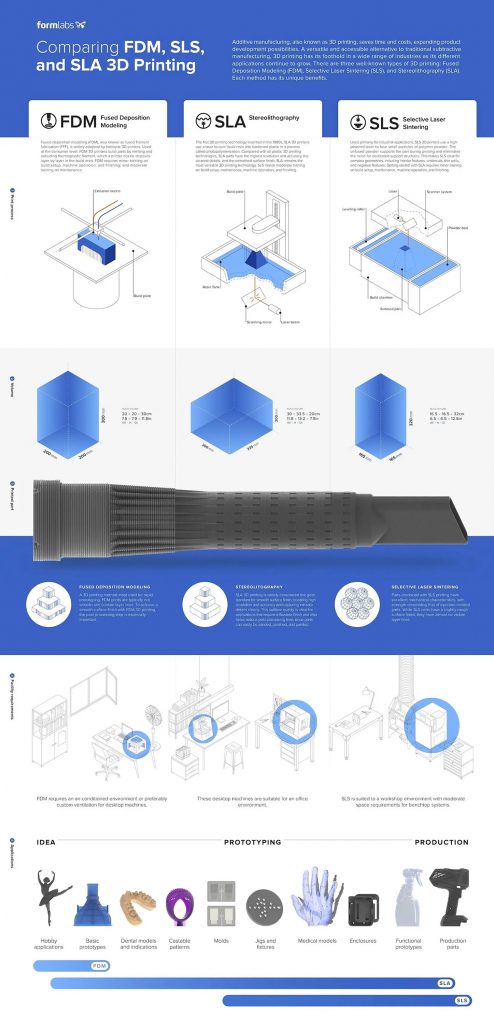reprint from the Formlabs blog
In-house 3D printing can increase manufacturing speed, reduce costs, enable rapid prototyping, and facilitate innovative products and designs. The popularity of 3D printing has grown as it has established itself as an accessible alternative to traditional manufacturing. However, 3D printing is not a one-size-fits-all technology. There are three well-known types of 3D printing: Fused Deposition Modeling (FDM), Selective Laser Sintering (SLS), and Stereolithography (SLA). Each method has its unique benefits.
The 3D printing infographic below is provided by Formlabs and it describes the key differences between FDM, SLS, and SLA 3D printing. It provides handy visuals for each method’s print process. The results of the printed parts differ, so it shows the results achieved with the three different 3D printing technologies. It is also important to optimize your workflow and floor space to best implement a 3D printer into your office environment. Lastly, the infographic demonstrates what applications each 3D printing technology is best suited for.
With this handy infographic, you can deepen your understanding of 3D printing technologies and jumpstart your decision-making process about which printer is best suited for you. (Click on the image to be taken to the Formlabs blog to view a much bigger image.)
For more information on the Formlabs 3D printers, please click below.








Leave A Comment